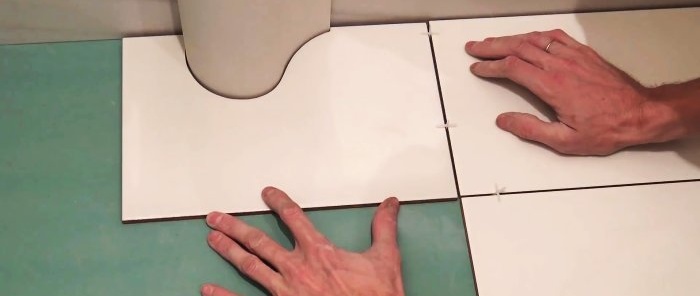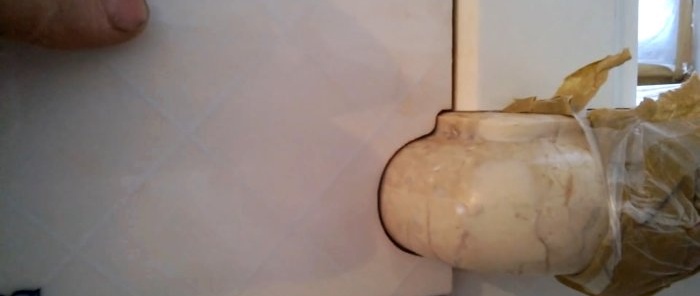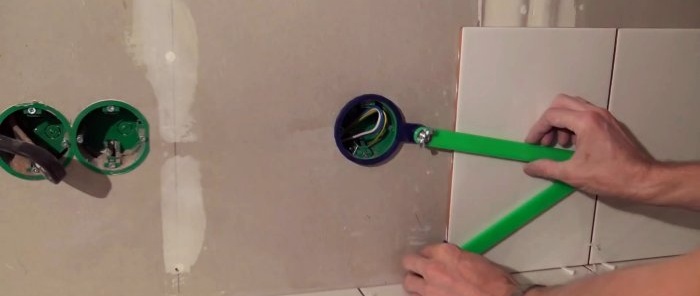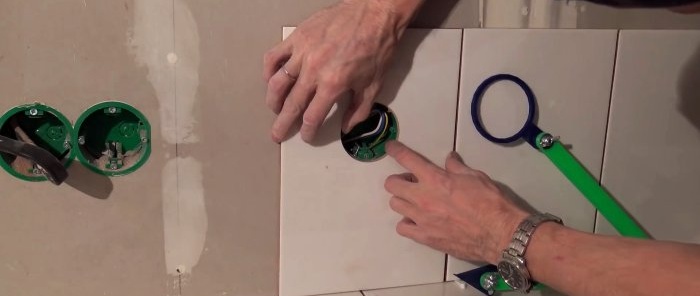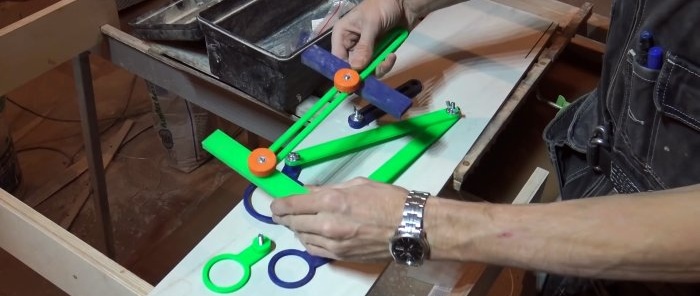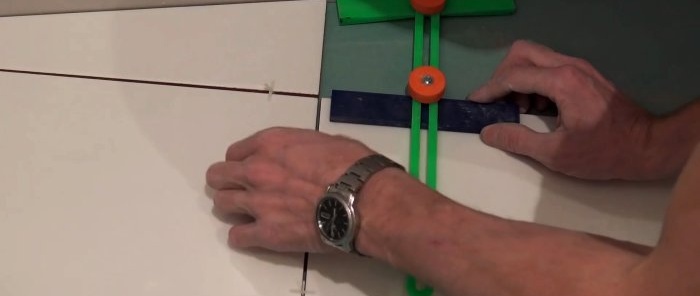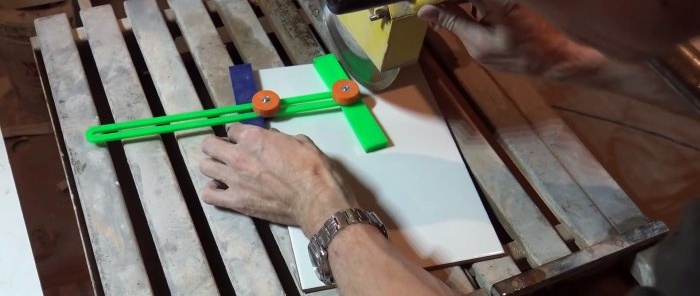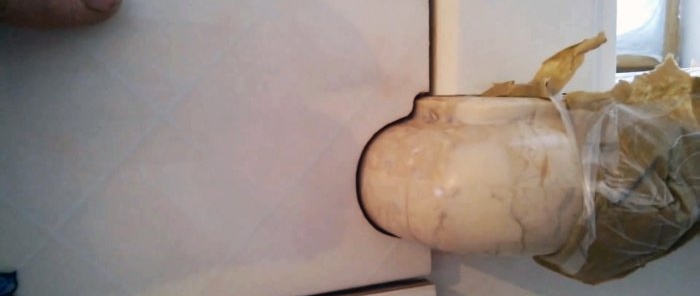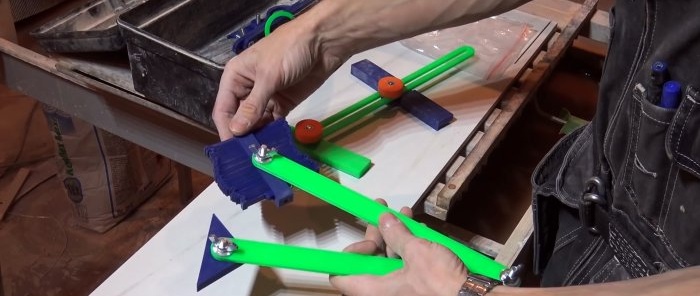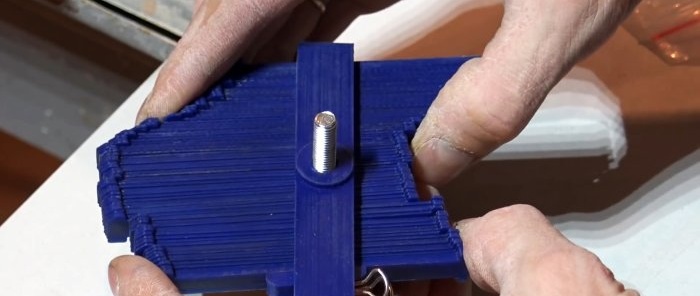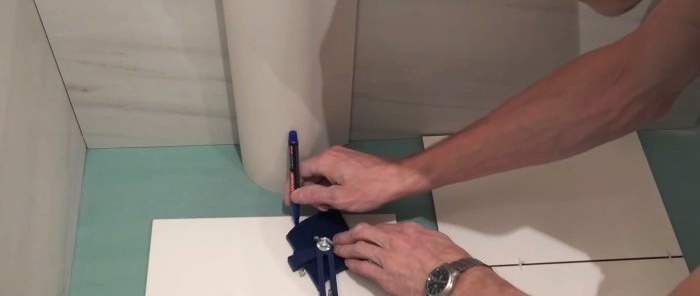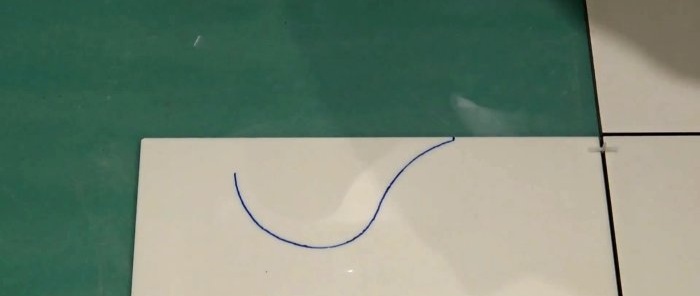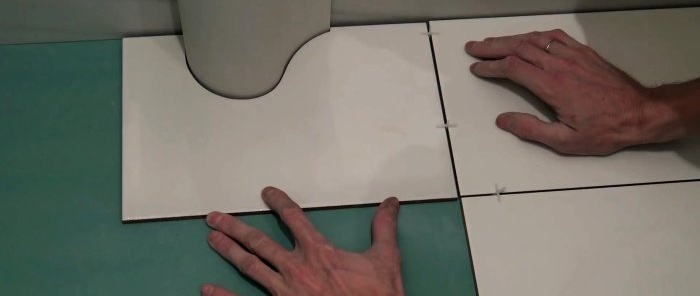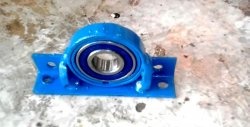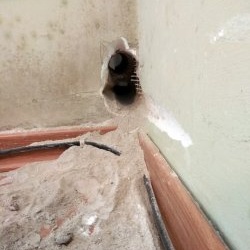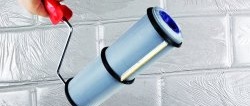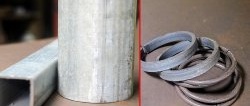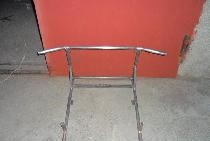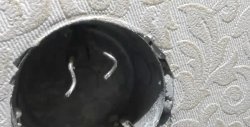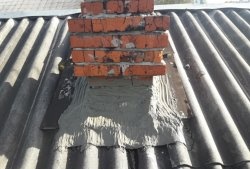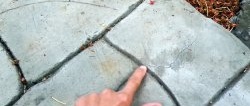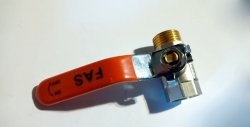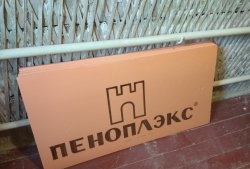Every finisher knows that when working with tiles, fit is a particular challenge. Typically, craftsmen use paper and cardboard to create a pattern, which is then used to draw and cut out an outline on the tile.
However, there is another, much more convenient and accurate method. To do this, it is necessary to manufacture a multifunctional, adjustable device.
With a homemade, multifunctional device, you can use it to: cut round holes for pipes, electrical sockets, etc.; make bevel cuts at different angles; go around the figured protrusions.
Design
The design of this device includes:
- rings designed for fittings and sewer pipes measuring 32 mm;
- rings designed for an internal diameter of 50 mm for socket boxes and sewer pipes, and for an external diameter for distribution boxes;
- cut rings for hard-to-reach places (for example, when the pipe is close to the wall);
- a corner in the shape of an isosceles triangle with an angle of 90 degrees and a side of 50 mm, having an indentation and a side of 1.5 mm;
- telescopic rod that can be used to increase length;
- sliding stop with a 1.5 mm protrusion for fixing parallel and diagonal surfaces;
- customizable template.
Note! The parts are made from plastic panels that are used for billboards. However, according to reviews from colleagues, it is quite possible to make them from a metal profile.
Flat cuts and holes
Depending on the required shape of the cut, working with the device has its own characteristics.
Before cutting a hole in a tile, you need to place a template of the required diameter on it and trace the outline with a marker.
Before making a flat cut, the fence is placed on the tile, brought to the wall and secured with a locking screw, and then transferred to the tile. In this case, the gap between the wall and the pattern is usually taken “by eye”, focusing on the previously laid tile. The resulting line does not have to be marked with a marker on the surface of the tile - the cutter of the tile cutter can move next to the pattern.
Shaped surfaces
The most difficult thing is to get around shaped surfaces - window sills, sinks, curved pipes, etc. Round or straight patterns cannot be used here, but there is another way out.
Using a needle-shaped metal template as a model, a reconfigurable device was assembled from 70 plastic plates, arranged in 1 mm increments and secured with two springs. The length of each is 70 mm, the thickness corresponds to the thickness of the tile, the stroke of the plates is about 70 mm.
During operation, the plates are tightly adjusted to the shape of the figured surface, then the pattern is transferred to the tile and outlined. If the length of the curved section is less than 70 mm, one approach is sufficient; if it is longer, you will need to carry out “facing” several times, gradually shifting the template.
As practice has shown, this device is universal - it can replace both a round and linear template.
Note! To protect from dust and dirt, it is recommended to store the reconfigurable template in a plastic bag. Otherwise, it will have to be disassembled and washed frequently.
Conclusion
Having tested the device in practice, we can come to the conclusion that it, like any prototype, requires improvement. Therefore, in the future it is planned to increase the size of the reconfigurable template in order to cover larger shaped surfaces, change the dimensions of the rods, increase the protrusion on the stop, etc.
I hope the device will be useful not only for tilers, but also for laminate and linoleum layers, as well as for various carpentry works.
